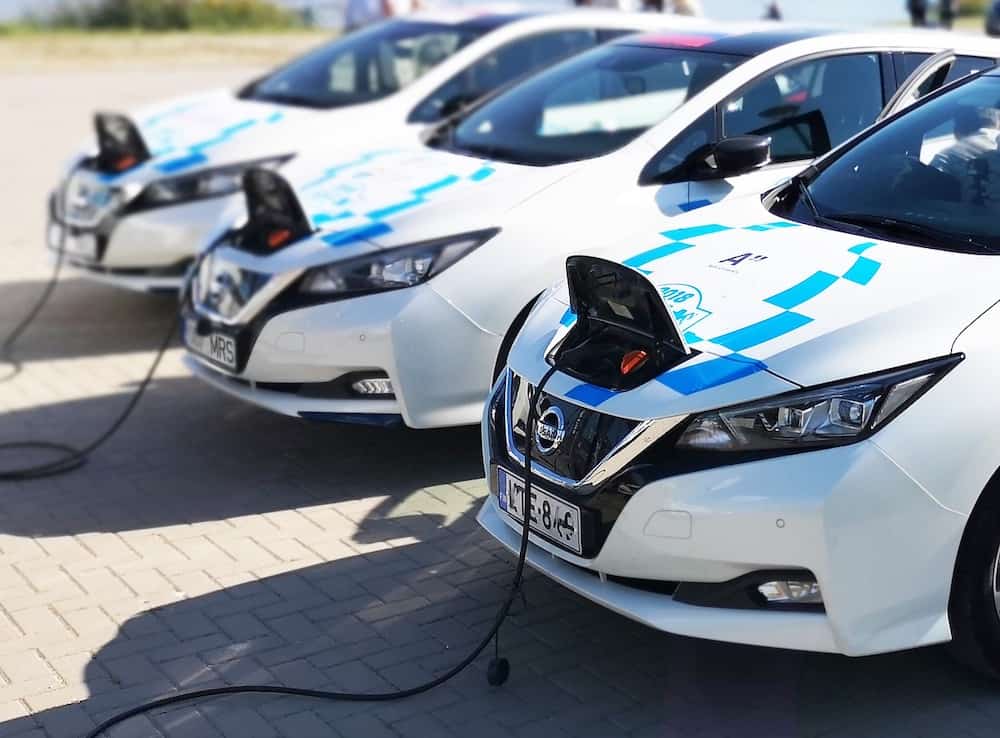
[Image above] With the rise in demand for electric vehicles and renewable energy, batteries are experiencing demands for improved performance as well. Credit: Max Pixel
As electric vehicles and renewable energy increasingly become major players in the transportation and energy markets, respectively, batteries are experiencing ever-growing demands in terms of energy density, cycle life, safety, and costs.
To fulfill these expectations, researchers have conducted many studies on alternative materials that could be used in batteries besides those that comprise traditional lithium-ion batteries. However, another method for improving battery performance—optimizing the structure or geometry of materials within a battery—has advanced far less to date.
“[The] use of batteries with particular geometries fitting specific locations within the hosting devices might be considered as a valuable approach to maximize the amount of active material and therefore increase the energy density of the overall systems … However, in most of the commercially available cell types (i.e., cylindrical, prismatic, coin, and flat cells), the range of geometries is rather narrow, and hence, the versatility achieved through modifying the battery systems is severely limited,” researchers write in a recent paper.
The researchers come from the Renewable Energy Research Institute at the University of Castilla-La Mancha in Albacete, Spain. In their paper, they argue that despite the limited progress in bringing new battery geometries to market so far, studies in the last decade using additive manufacturing techniques to develop electrodes with higher surface areas hold great potential.
Fused filament fabrication (FFF) in particular is the additive manufacturing technique they highlight. FFF is an extrusion-based technique that involves pushing solid thermoplastic-based filaments through a heated nozzle to create 3D objects layer by layer. Filaments containing ceramic powders can be processed by FFF to shape ceramic parts.
Compared to other popular additive manufacturing technologies such as direct ink writing or vat polymerization techniques, handling and storing the materials used in FFF is less complex. Additionally, FFF approaches are among the most advanced systems for multimaterial printing, “which represents a key link towards the revolutionary concept of ‘print-it-all’ manufacturing strategies,” the researchers write.
Currently, there are few commercial FFF filaments available for electrochemical applications, though graphene/polylactic acid composite filaments were recently introduced in the market. Some research groups have developed their own polymer-based composites as well, such as here and here.
While these studies using polymer-based composites show potential, the researchers note that, to their knowledge, no studies have investigated using FFF to create full ceramic/additive-free electrodes for lithium-ion batteries.
Full ceramic electrodes are expected to offer higher energy density than conventional composite electrodes for several reasons, including the fact that polymer binders may lead to electrode delamination and performance losses due to uncontrolled side reactions. To achieve full ceramic electrodes, though, requires the 3D-printed components to undergo thermal treatment to remove the polymeric binder and subsequent sintering to densify the ceramic structure.
In their study, the researchers attempted the debinding/sintering treatment to achieve full ceramic electrodes made of either Li4Ti5O12 (LTO) or LiCoO2 (LCO). They then analyzed the electrodes to determine their phase stability, micro and macrostructure, electrical conductivity, and electrochemical performance.
Based on the results, the researchers determined that the phase stability of full ceramic electrodes was successfully preserved during debinding and sintering. Regarding performance, the 3D-printed electrodes exhibited similar electrical conductivity to electrodes produced by conventional uniaxial pressing and further sintering. Additionally, the 3D-printed LTO and LCO electrodes displayed 96% (168 mAh g−1) and 94% (129 mAh g−1) of their theoretical reversible capacities, respectively.
“All in all, the results in this work position FFF as a valuable method to produce ceramic electrodes with similar properties to those achieved by conventional manufacturing techniques, which implies clear advantages for their fabrication in a wide range of geometries, from the macroscale down to the microscale,” the researchers write.
They conclude by stating that further research is currently ongoing to evaluate the potential of this approach for fabrication of full cells, interdigitated electrodes of high surface area, and all-solid-state lithium-ion batteries with ceramic electrolytes.
The paper, published in Applied Materials Today, is “Development of full ceramic electrodes for lithium-ion batteries via desktop-fused filament fabrication and further sintering” (DOI: 10.1016/j.apmt.2021.101243).
